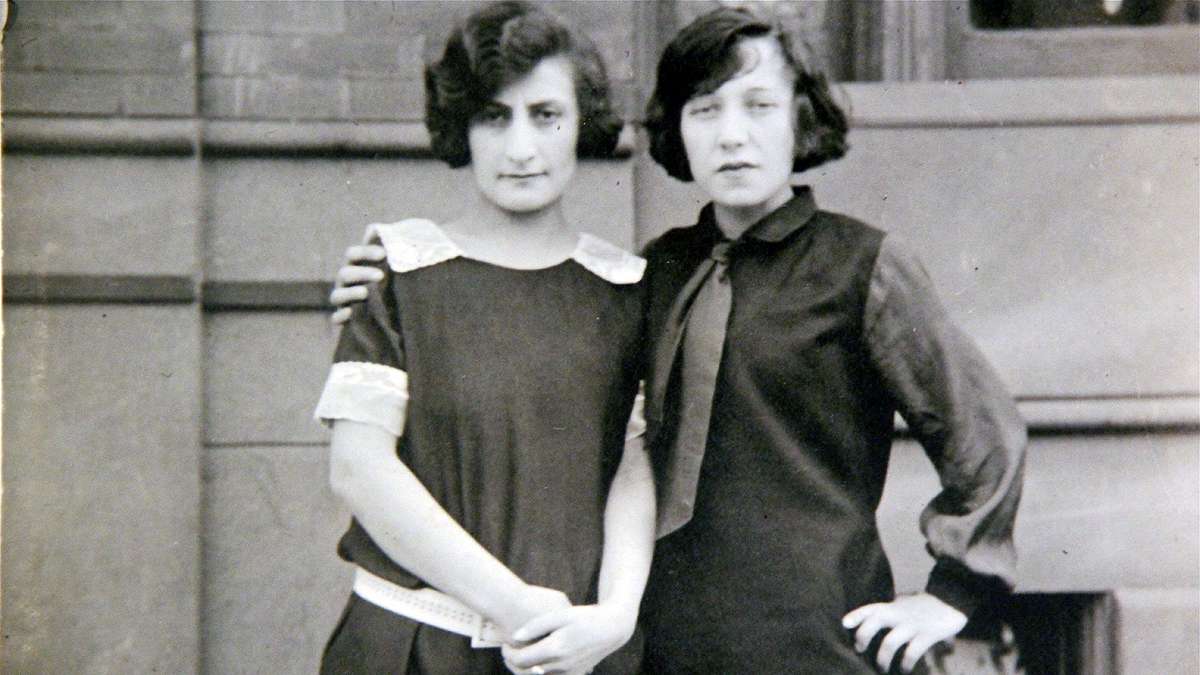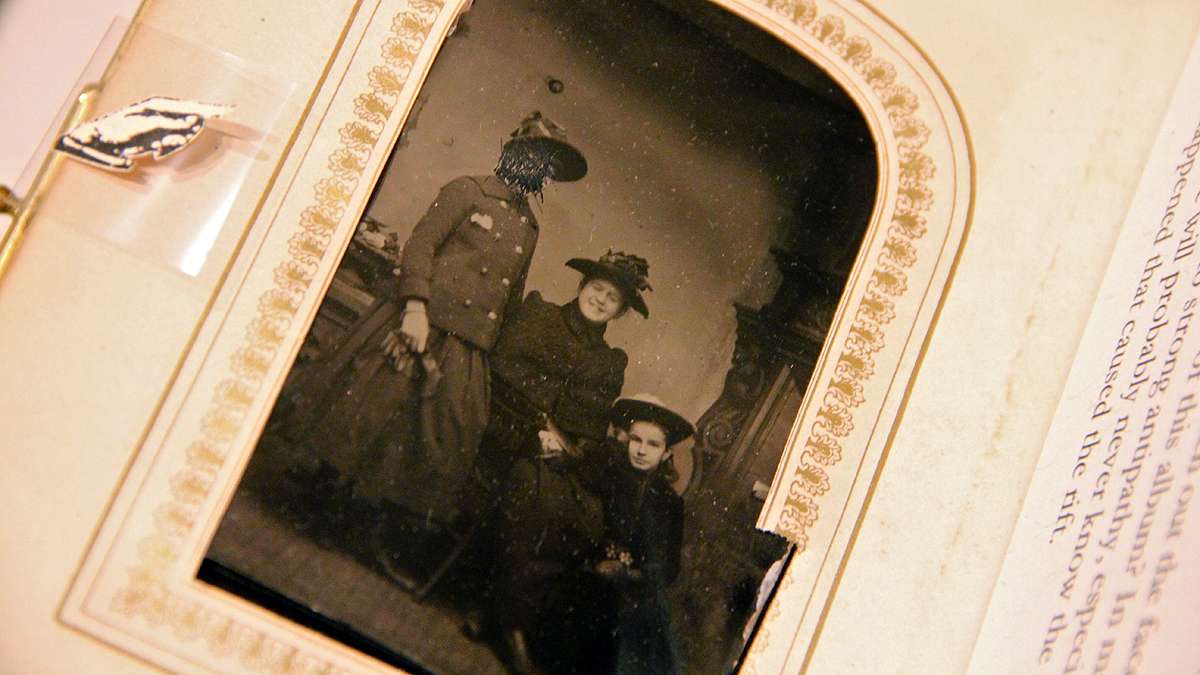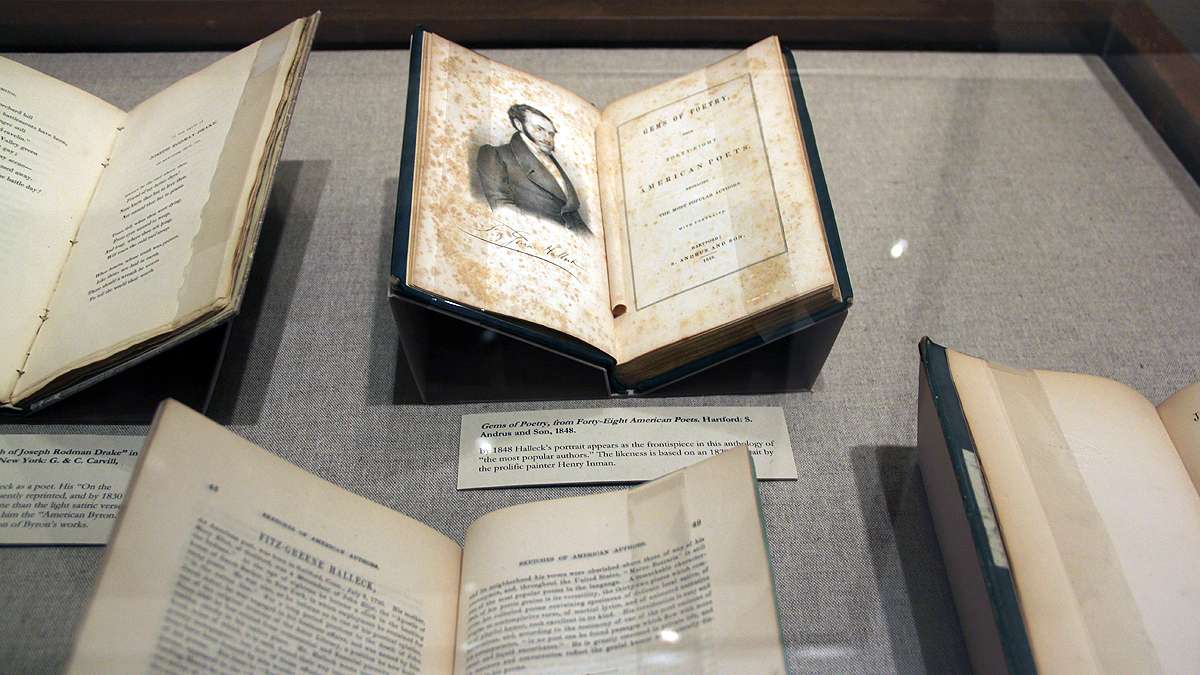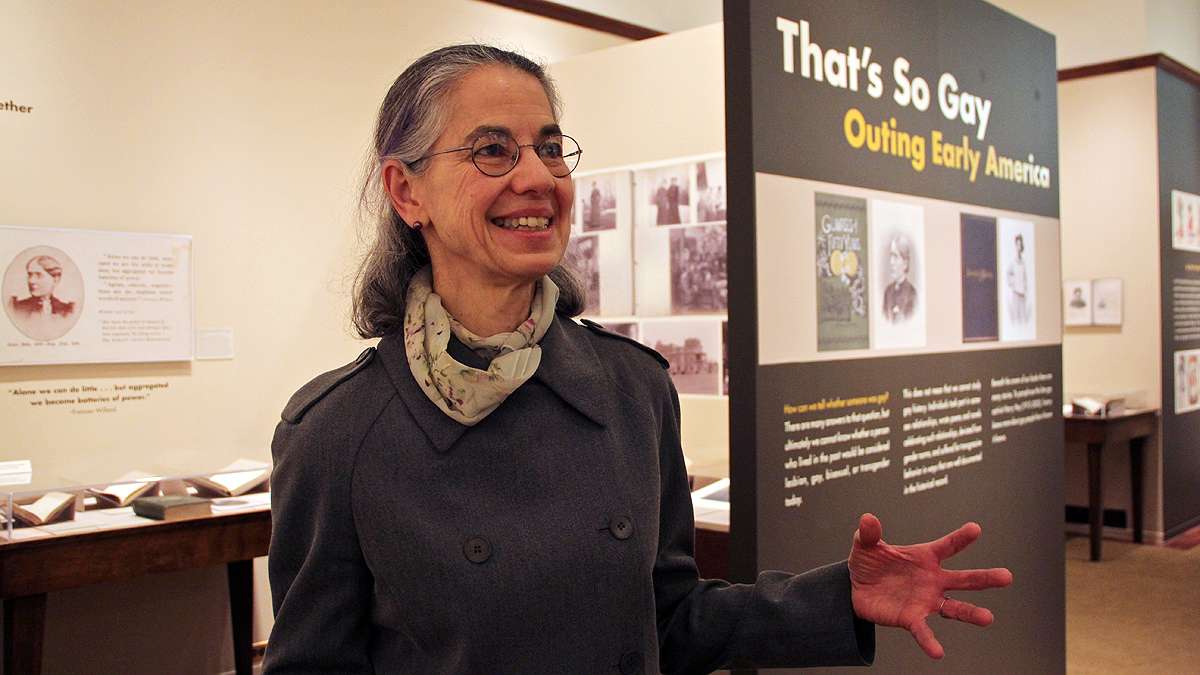Legacy of real-life ‘monument man’ on display at Philly’s 30th St. Station
-

A woman wearing a necktie embraces another woman in an anonymous photo from the early 20th century. Is it gay? The Library Company of Philadelphia explores that question and others with a new exhibit. (Emma Lee/for NewsWorks)
-

A woman's face is scratched out in a tintype from the 1890s, suggesting strong passions. (Emma Lee/for NewsWorks)
-

-

The relationship between Joseph Rodman Drake and Fitz-Greene Halleck, 'America's Byron,' in the mid-19th century is well documented in Halleck's writing. (Emma Lee/for NewsWorks)
-

Walt Whitman's 'come-hither' portrait from Leaves of Grass stands in sharp contrast to the formal portraits of the time, according to curator Connie King. (Emma Lee/for NewsWorks)
-

An exhibit at the Library Company of Philadelphia explores the early history of gayness in America. (Emma Lee/for NewsWorks)
-

Valentine's Day cards lampooning gender bending take on a twist in the context of The Library Company's new exhibit: That's So Gay. (Emma Lee/for NewsWorks)
-

Curator Connie King combed the archives of the Library Company of Philadelphia for material suggestive of the early history of gayness in America. (Emma Lee/for NewsWorks)
-

-

The Pennsylvania Railroad World War II Memorial by Walter Hancock depicts an angel raising a fallen soldier from the flames of war. (Emma Lee/for NewsWorks)
-

-

-

The movie “The Monuments Men,” released this weekend, tells the story of a World War II military unit responsible for finding and rescuing art that had been looted in combat zones.
The movie is based on the real-life artists, scholars, and conservators the Army assigned to be Monuments, Fine Arts, and Archives Officers. One of the more prominent monument men was the sculptor and teacher Walker Hancock.
Hancock was the head of sculpture at the Pennsylvania Academy of the Fine Arts in Philadelphia. As part of an elite 10-member platoon of scholars, he crisscrossed France and Germany in the hunt for plundered art in catacombs, crypts, mines, and bunkers.
When he returned from military service, he was almost immediately commissioned to sculpt a memorial to fallen World War II soldiers who had been railroad workers. That work, considered his masterpiece, is installed in Philadelphia’s 30th Street Station.
“Pennsylvania Railroad War Memorial” lists the names of more than 1,300 fallen soldiers on a podium supporting an enormous angel cradling the body of a dead man.
“Looking at it from down body, you get the sense of that limp body, and how strong that angel is,” said Doug Martenson, an instructor at PAFA and conservator of this statue.
Martenson pointed to the dead soldier’s bare chest and torn pants. “He could have had a soldier in full regalia, but he chose to make it a person – a human being — an everyman,” he said.
Every day, at the 30th Street Station in Philadelphia, an estimated 11,000 travelers walk past the sculpture. The granite base is chipped, likely from too many rolling suitcases.
Martenson said he was last called to clean and conserve the sculpture about five years ago. Looking at it recently, he noticed a buildup of dust and tarnish on the bronze.
“It’s losing some of that beautiful, warm brown that exists in the piece,” he said. “It’s really one of the great colors you can get out of bronze – that almost woodlike brown.”
The work of the monuments men did not end with WWII. Modern-day monuments men are working in combat areas of Afghanistan and Iraq, said Dr. Laurie Rush, a cultural resource manager for the Department of Defense, working at Fort Drum, New York.
“There might be snipers up in date palm trees. One way to get rid of a sniper in a grove of date palms is to cut them all down,” said Rush. “But from the perspective of a monuments officer, this is a historic family property that is handed down from generation to generation. Cutting it down may infuriate a local village that could have been allies – turned against you.”
Rush will be at the University of Pennsylvania Museum of Archaeology and Anthropology Wednesday to talk about lessons learned form the Monuments Men of World War II.
WHYY is your source for fact-based, in-depth journalism and information. As a nonprofit organization, we rely on financial support from readers like you. Please give today.





